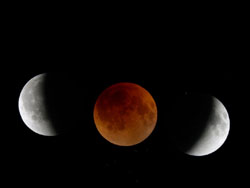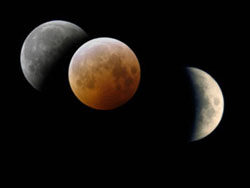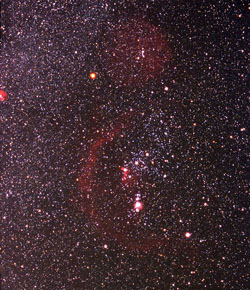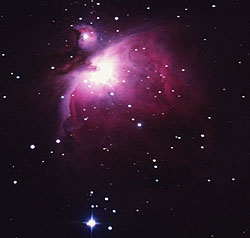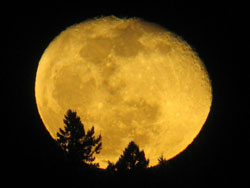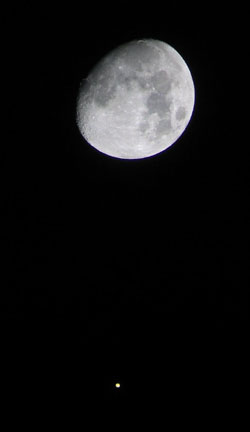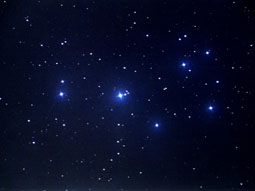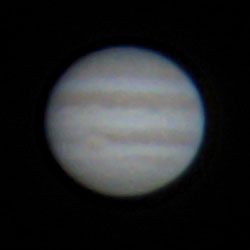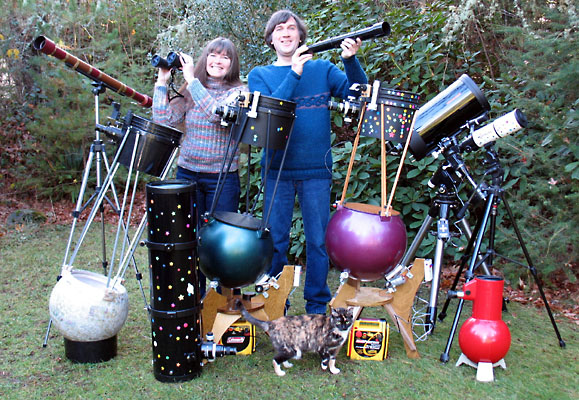 This is us with all but one of our telescopes. The one
in the upper left is a replica that Jerry made of the scope that Galileo
built and used 400 years ago. Jerry is holding a commercial "Galileo
Scope" that was made and distributed world wide to help promote the
International Year of Astronomy (2009). The three big round-bottomed
scopes are trackballs that Jerry made (more on them below), and the
little red round one is an Astroscan. The big black one in back is a
9.25" schmidt-cassegrain, the white one on the right is a Short-Tube 80,
and the long black one standing on end in front of Kathy is an 8"
Newtonian. Do we have too many scopes? Of course not!
We also have another we bought after this picture was taken: a 20"
Dobsonian built by master telescope maker Mel Bartels. (It
gathers almost as much light as all the scopes in this photo combined.)
This is us with all but one of our telescopes. The one
in the upper left is a replica that Jerry made of the scope that Galileo
built and used 400 years ago. Jerry is holding a commercial "Galileo
Scope" that was made and distributed world wide to help promote the
International Year of Astronomy (2009). The three big round-bottomed
scopes are trackballs that Jerry made (more on them below), and the
little red round one is an Astroscan. The big black one in back is a
9.25" schmidt-cassegrain, the white one on the right is a Short-Tube 80,
and the long black one standing on end in front of Kathy is an 8"
Newtonian. Do we have too many scopes? Of course not!
We also have another we bought after this picture was taken: a 20"
Dobsonian built by master telescope maker Mel Bartels. (It
gathers almost as much light as all the scopes in this photo combined.)
The little colored dots you see on some of the scopes are stick-on
stars that we put on when we see something particularly cool through the
scope. We label them and date them so we can remember what each star
signifies.The green trackball doesn't have many stars yet because the
photo was taken not long after Jerry made it (as a gift to Kathy), but
we look forward to many good observing nights with it in the years to
come.
The "trackball" is a design that Jerry came up with in 2005. It's a Newtonian scope built into a spherical base, and it has a completely new type of tracking system. We couldn't find mention of anything like it anywhere, so Jerry wrote an article about it for Sky & Telescope magazine. That was in the August, 2006 issue, and there's more about the scope right here on a separate trackball page.
In addition to building telescopes and observing through them,
we enjoy taking pictures of what we see. Here are some photos we've
taken through our telescopes over the last few years. Enjoy!
